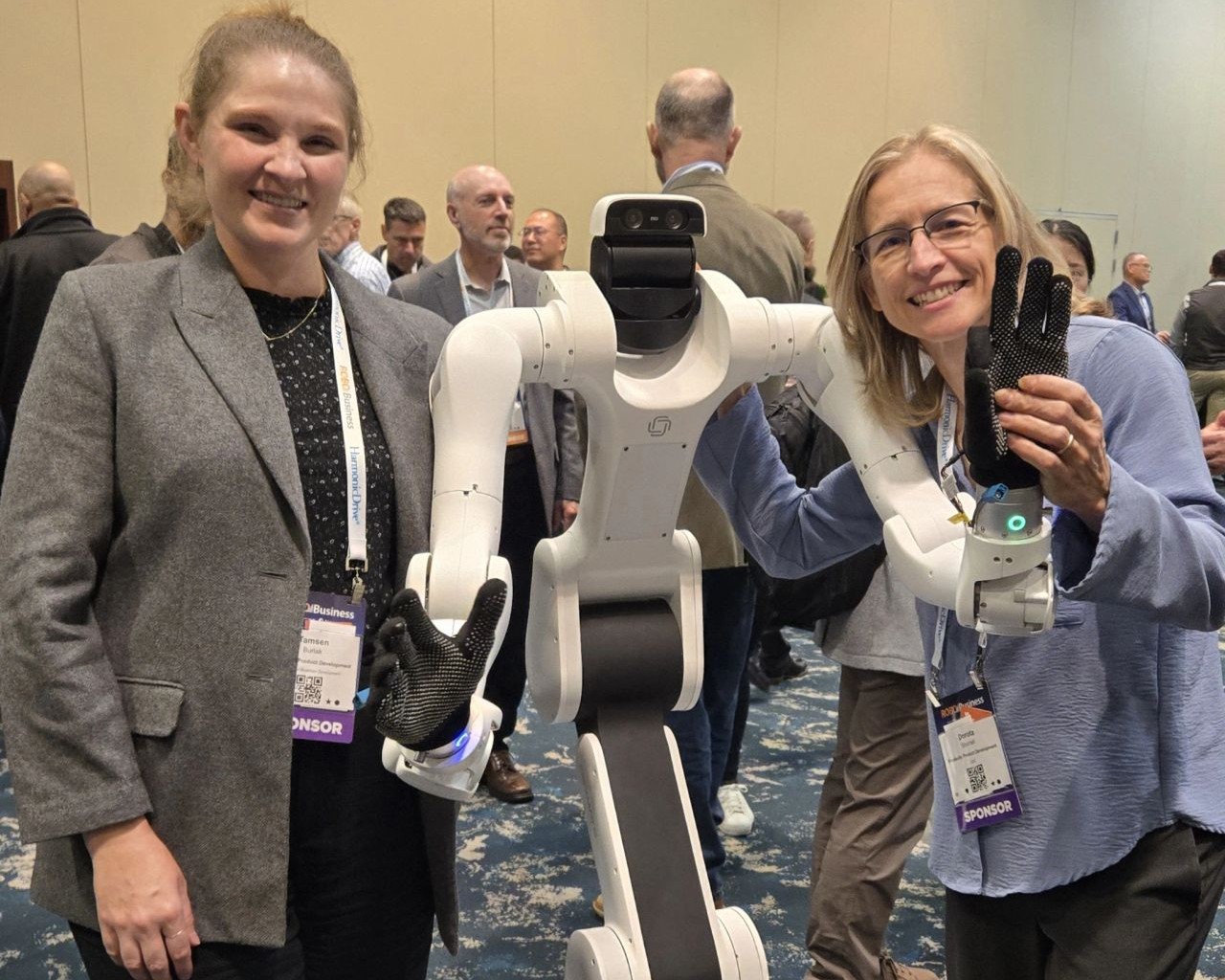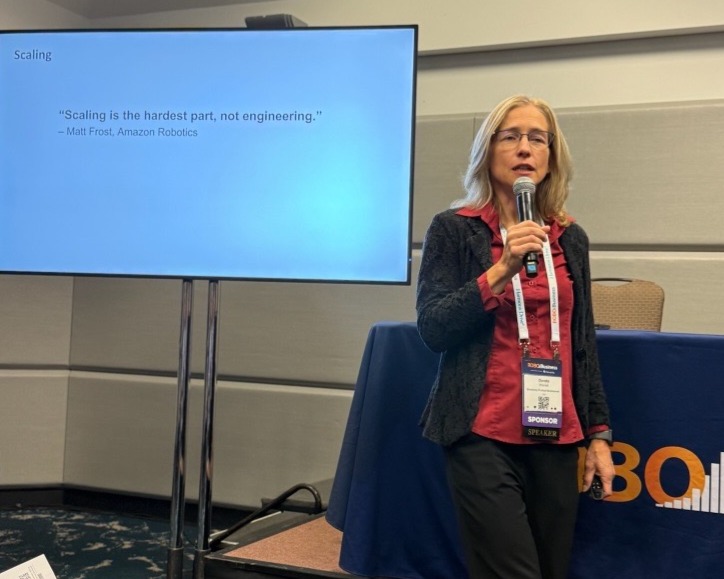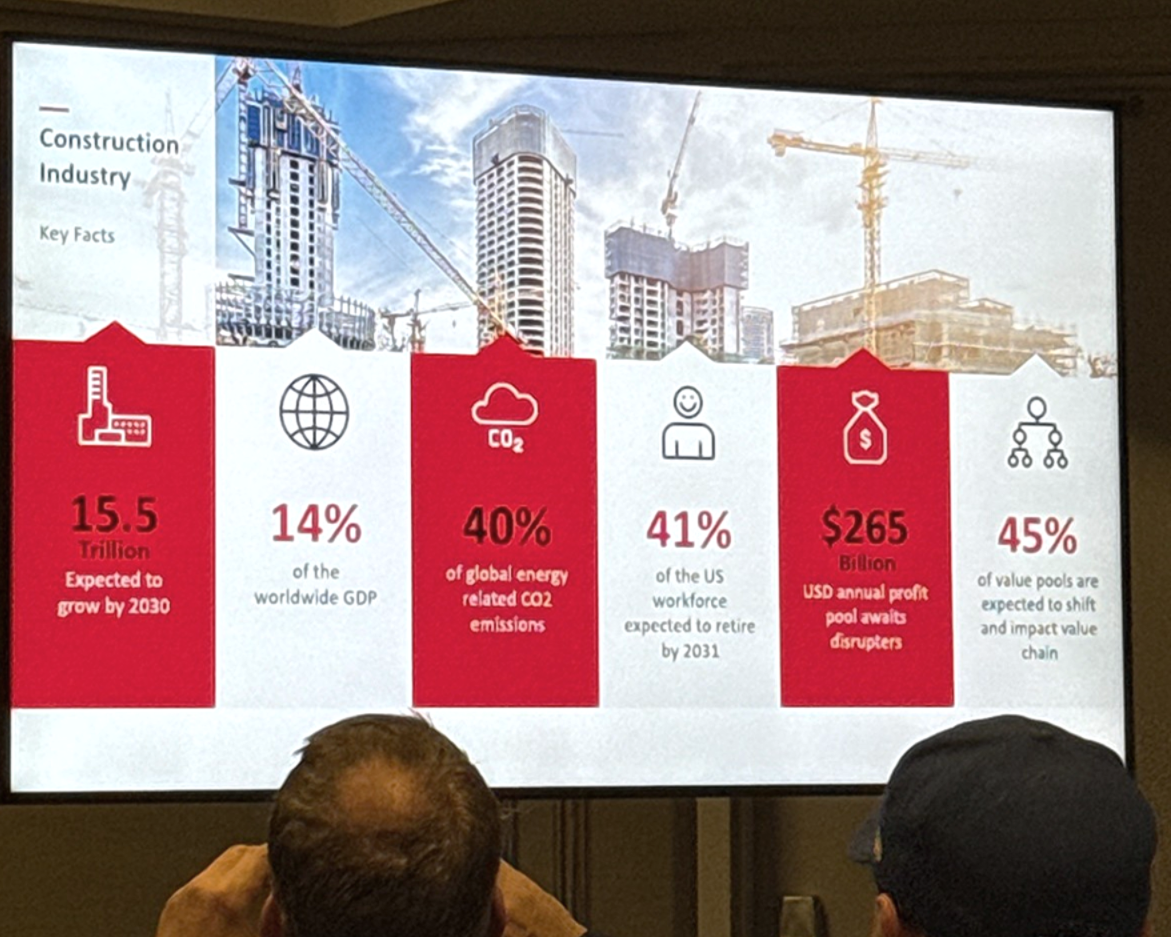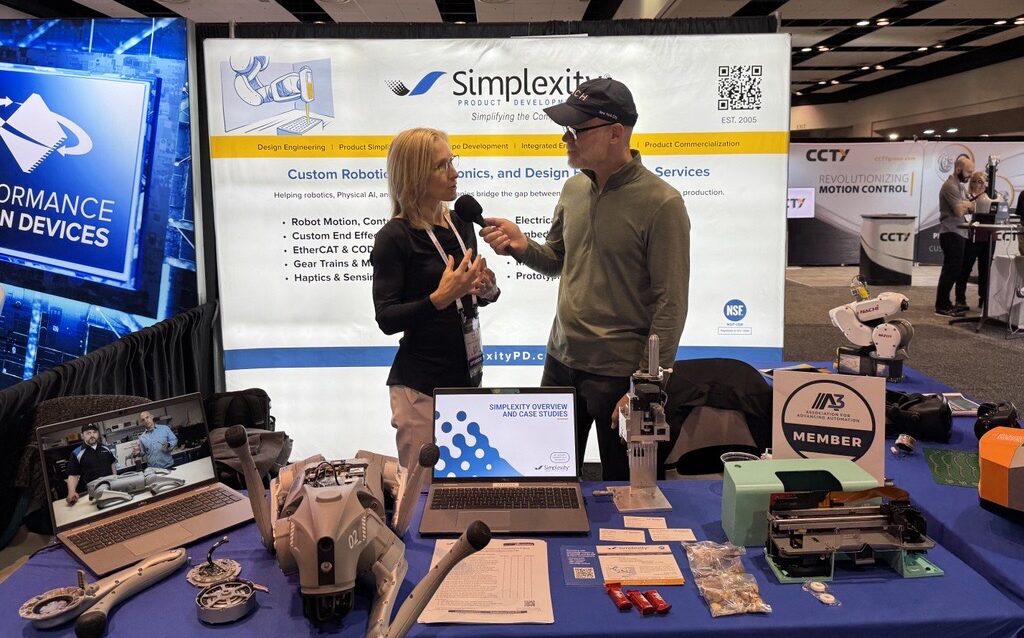I recently attended RoboBusiness 2025, a gathering of robotics innovators, engineers, and industry leaders focused on the latest advances in AI, automation, and robotic technologies. The event offered a unique opportunity to explore cutting-edge research, gain insights from experts, and see how robotics is being applied across a variety of industries.
During my time at the show, I spent time at Simplexity’s booth near the Engineering Theatre, connected with many of the attendees, and watched some powerful sessions.
The sessions I attended provided valuable insights into humanoid robotics, construction automation, and connected health technologies. The event highlighted how emerging technologies are not only advancing rapidly but also beginning to deliver practical solutions across industries.

Below is a breakdown of some of the sessions I attended at RoboBusiness 2025 and the insights I gained from each:
Lessons Learned from First Humanoid Deployments
Speakers: Jim Fan (NVIDIA), Pras Velagapudi (Agility Robotics), Mike Oitzman (The Robot Report)
The session on humanoid robotics illustrated both the promise and the complexity of deploying robots in real-world settings. Early commercial deployments are primarily in controlled, caged environments, but the ultimate goal is to enable safe collaboration between humans and humanoids. One key challenge is the scarcity of high-quality real-world training data. Synthetic data and digital twin simulations, such as NVIDIA’s Isaac Lab, are helping to accelerate robot learning, while foundation models allow cross-robot data sharing and adaptable multi-step sequences. Reducing deployment costs, ensuring safety, and scaling manufacturing are critical to broader adoption. While humanoid robotics is still evolving, the rapid pace of innovation suggests significant advancements are on the horizon, offering a glimpse of a future where humanoids may be fully integrated into everyday workspaces.
As I left the session, it was clear that the challenges of robotics extend far beyond humanoids alone.
Lessons from Successful (and Failed) Robotics Projects
Speaker: Dorota Shortell (Simplexity Product Development)
Even though I was spending a lot of time on the show floor, I was excited to make the time to attend our CEO’s session about key lessons from both successful and failed robotics projects. The discussion emphasized that innovation alone does not guarantee market success. Instead, the companies that thrive focus on understanding real customer problems, iterating rapidly, and co-developing solutions with early clients.
Key takeaways included the importance of achieving product-market fit, prioritizing the simplest set of features that truly address customer needs, and using fast feedback cycles to refine designs. The session also highlighted that scaling requires careful planning. Building a prototype is just the beginning, while ramping to production introduces new challenges in manufacturing, testing, and logistics. Beyond technology, success is strongly tied to team dynamics, leadership, and mentorship, as well as developing sustainable business models and choosing the right partners and investors.
This session tied together many themes from the other sessions I attended, showing that the human and business elements are just as critical as the technology itself. For readers interested in a more detailed exploration of these lessons, the full blog, presentation slides, and a self-assessment quiz for robotics start-ups are available on Simplexity’s website.
Challenges of Building Construction Robots
Speakers: Ali Raja (ABB Robotics), Kevin Albert (Canvas), James Emerick (Cosmic Robotics), Mike Oitzman (The Robot Report)
Construction robotics is emerging as a solution to labor shortages, safety concerns, and efficiency challenges in one of the world’s largest industries. Robots are proving highly effective at repetitive, high-risk tasks such as drywall finishing, solar panel placement, and elevator installation, reducing injuries and improving consistency. Unlike controlled manufacturing environments, construction sites are unpredictable, with variable lighting, weather, and physical obstacles. Designing robots for these environments requires extensive field testing and iterative refinement, ensuring that hardware is ruggedized and reliable. AI-driven systems allow robots to continuously collect and analyze data, adapting to new conditions and improving performance over time.
Hearing these real-world examples made me reflect on how robotics isn’t limited to industrial or construction applications. The principles of data-driven automation and human-centered design also extend into healthcare, where connected systems are transforming patient care.
Understanding Dexcom’s Connected Future
Speaker: Girish Naganathan (Dexcom)
Connected health technologies are advancing rapidly, particularly in diabetes management, where AI-driven insights can make a significant difference in patient outcomes. Dexcom’s Stelo product helps users understand how diet, stress, and lifestyle affect glucose levels, targeting prediabetic and Type 2 patients. Integration with insulin pumps, smartwatches, and healthcare platforms enables seamless data sharing between patients and providers. AI provides real-time guidance and actionable insights, capturing trends and patterns that humans might miss. Ensuring compatibility, security, and reliability remains essential, and solutions are designed with patient feedback and cross-functional engineering teams to maintain usability and simplicity.
Seeing how AI and connected systems improve health outcomes reinforces a broader theme across all the sessions: whether in robotics or healthcare, technology succeeds when it is thoughtfully integrated with human needs and practical environments.
Dorota Shortell being interviewed by Daniel Theobald at the Simplexity booth
Conclusion
Attending RoboBusiness 2025 reinforced that robotics and connected technologies are advancing rapidly, with practical applications already improving safety, efficiency, and quality of life across industries. From humanoid robots to construction automation to connected health, the sessions underscored the importance of combining innovative engineering with real-world deployment strategies.
The event organizers did a wonderful job putting together the show, presenting knowledgeable speakers, bringing an engaged audience together, and creating memorable networking opportunities. I look forward to catching all of the show recaps from The Robot Report. See you next year at RoboBusiness 2026!





